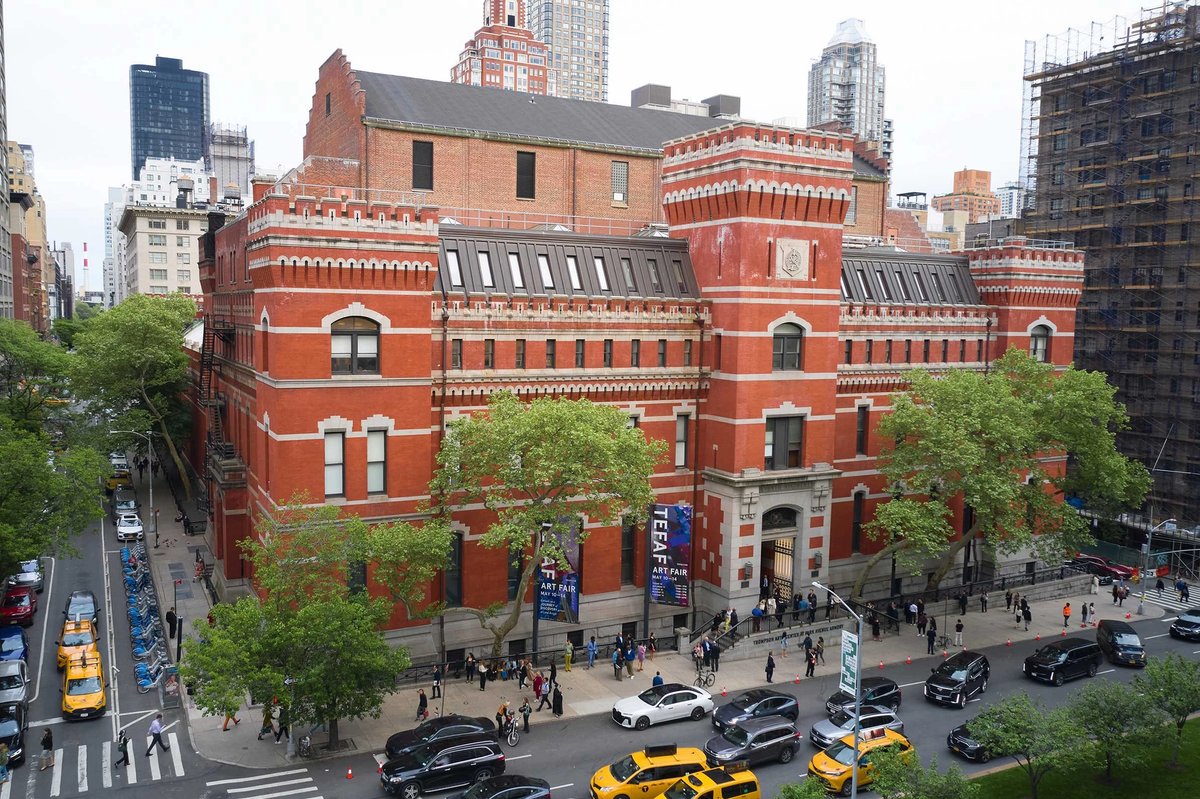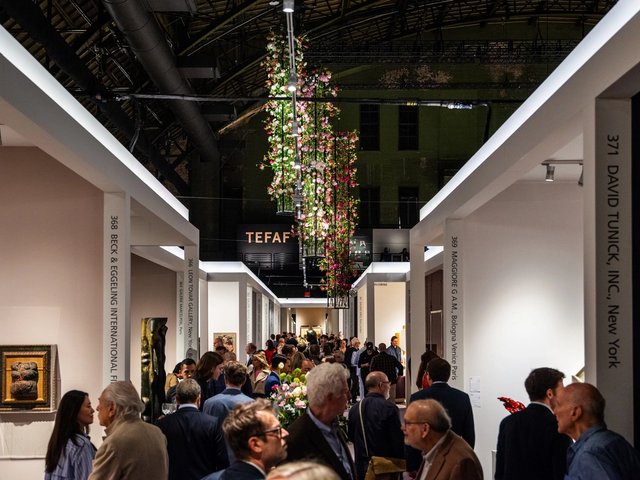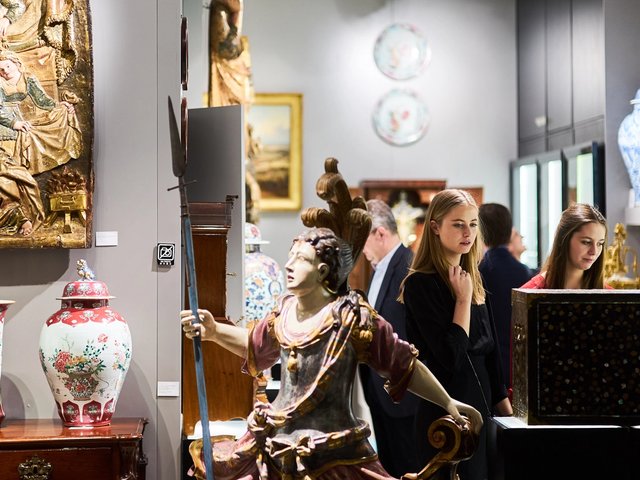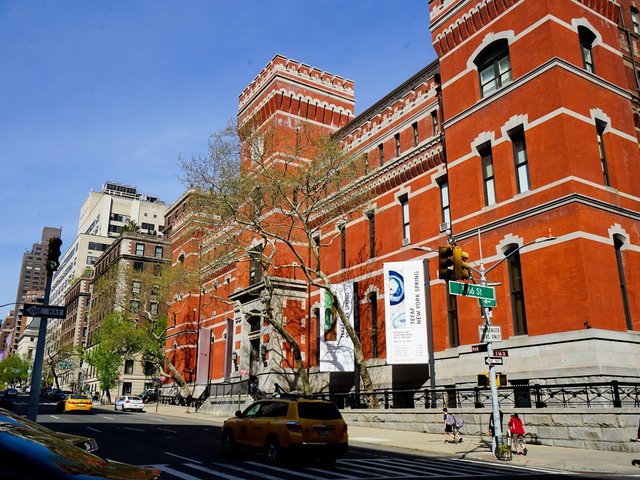Tefaf New York returns to the Park Avenue Armory’s 55,000 sq. ft main hall this year with 91 exhibitors from four continents in the first test of the US President Donald Trump’s recently announced tariff regime on the New York art and antiques market.
As a fair that prides itself with presenting 7,000 years of art, Tefaf is celebrated for bringing together objects from an unparalleled range of international sources, provenances and price points. Consequently, the stakes are high in an already difficult moment for the market. Immediately after Trump announced his “Liberation Day” tariffs on 2 April, the New York fair’s director Leanne Jagtiani sent out a letter to all exhibitors acknowledging the “significant impacts” on the industry. She assured dealers that the fair remained in “close communication” with shippers, as well as their “legal, tax, and shipping advisers”, adding that Tefaf had taken the initiative to advocate for the “exclusion of artworks from potential EU reciprocal tariffs with the EU commission”. The EU has since implemented a 90-day pause on retaliatory tariffs.
Though Trump’s on-off relationship with tariffs extends back to his first term, the latest saga began last month when the president announced his most expansive and aggressive tariffs yet, including a 10% baseline for all nations (the EU was to face a 20% rate while the UK’s was 10%). The announcement sent the stock market plunging and promptly raised questions over the impact on the trade of art and antiques. The havoc only escalated when, a few days later, Trump declared a 90-day pause on all tariffs, except China’s. The repeal brought short-term relief to Wall Street, but another a steep drop in rates followed the next day.
Hopeful yet cautious
There is also confusion over exactly what will be included under the tariffs. “Artworks”—however they are defined—are understood to be exempt. But it appears that antiques such as furniture and collectables, as well as contemporary works in unconventional materials—categories under which a significant portion of items brought to Tefaf fall—will be subject to the new tariffs.
The art market is usually the last to be economically affected and is among the early ones to pick up
The “big question” now is how collectors will respond in the immediate aftermath and confusion, Jagtiani says. Despite the instability, the director is hopeful that buyers will not be deterred from spending their money on art and objects as “these are times when we need something positive and beautiful in our lives”. Exhibitors are also both hopeful and cautious. This year, 78 returning galleries are joined by 13 newcomers including São Paulo’s Luciana Brito Galeria, the London gallery Ben Hunter and three from New York: Ortuzar, DeLorenzo Gallery and Anna Hu Haute Joaillerie.
The Paris-based Galerie Chenel, which has participated in the New York outpost since its inception in 2016, has a second-century AD marble torso of Apollo, on offer for around $100,000. “We have been chasing this work, which has been in a private French collection, for decades,” says the gallery’s co-founder Ollivier Chenel. The dealership always occupies one of the historic rooms upstairs, which this year also features a “colossal” head of Apollo from the same era for around $600,000 and a bassanite statue of an Egyptian dignitary from around 520 BC. Priced at $1.8m, the statue—which was housed in the US in the 1930s and then in Europe for a few decades—is exceptionally rare, according to the dealer, and has been conserved to an “astonishing” quality.
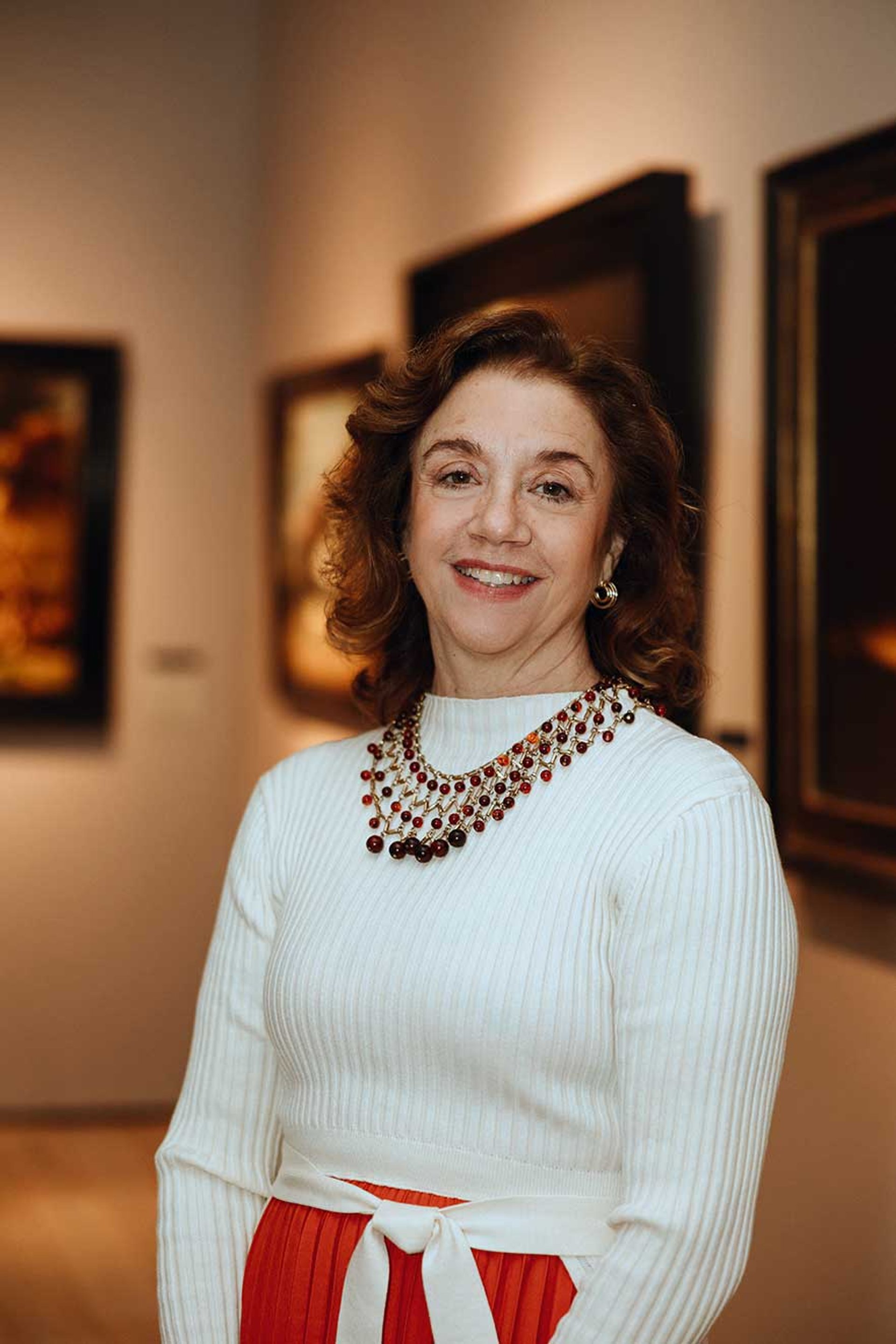
Leanne Jagtiani, the director of Tefaf New York, says that the fair is like “a museum where you can buy things”
Photo © Maison Rowena
Chenel agrees that the financial implications of Trump’s tariffs are as yet unknown and will only become clearer during the vernissage. He remembers a challenging six-month period directly after the 2008 financial crash, though he notes how the market bounced back fairly quickly. “Antiquity collectors are real lovers of sculpture, so they rarely just go for the profit aspect,” he says. “The desire for the object and its history pushes them to live with something forever.”
Some galleries are already rethinking certain aspects of their businesses. Nara Roesler—the Brazilian contemporary gallery with a New York outpost—is now considering a residency programme that would allow the gallery’s living artists to produce work in the US for any shows in the firm’s Chelsea space. “We are not yet sure if it makes sense as a grand plan,” says the gallery’s partner, Daniel Roesler, noting that the tariffs’ impact on the works they are bringing to Tefaf New York is still unclear. “We were initially told that works shipped before 9 April wouldn’t be affected, so we went ahead with sending works,” he says. The decision came out of a consultation with the Art Dealers Association of America and their in-house lawyers.
Organised by the gallery’s curator Luis Pérez-Oramas, Nara Roesler’s booth is dedicated to the story of the Brazilian sculptor Maria Martins, who acquired Piet Mondrian’s Broadway Boogie Woogie (1943) for $800 after it failed to sell in their joint show at New York’s Valentine Gallery. Martins later donated the painting to New York’s Museum of Modern Art. The presentation also features sculptures from Martins’s Amazonian period alongside pieces by Vik Muniz, Sheila Hicks and Amelia Toledo.
Upcoming EU cultural goods law
Another potential thorn in the side of the market is the incoming EU cultural goods law, which aims to prevent the illicit trade of cultural goods and money laundering, and to protect cultural heritage. Tefaf’s head of fairs, Will Korner, notes that this New York edition is exempt from the law, which comes into effect in June, but he warns that galleries dealing in archeological materials “might have more challenges” in upcoming editions, perhaps more so in Maastricht.
“Bringing objects back into the EU for the first time might require more strict background checks,” Korner says. He thinks dealers will probably have a bigger workload in compiling evidence on shipping works from non-EU nations into the EU zone.
Martin Clist, a director of the London gallery Charles Ede, notes how Brexit means British businesses are affected from the upcoming EU law differently. “We are no longer subject to the same laws to get works into Britain, but we might have difficulty the other way around, unless a work is published prior to 1972 or has an export licence, which most ancient artworks don’t,” he says. The gallery considers Europe its second biggest market after the US.
As for the bigger picture, Clist has a generally positive outlook. “The art market is usually the last to be economically affected and is among the early ones to pick up,” he says. A standout of the gallery’s booth this year is a life-size marble torso of a youth, from around the second century AD, last exhibited in Japan in 1973. This Roman example, priced at $850,000, is a copy of a Greek bronze originally created by Polykleitos in 430-420BC. A comparable version, known as the “Dresden Boy”, is in the collection of the Staatliche Kunstsammlungen Dresden in Germany.
Despite opening amid what some describe as unprecedented economic and political uncertainty, Tefaf New York clearly remains committed to pulling out all the stops, particularly in a year that has seen the reopening of the Frick Collection and the Metropolitan Museum of Art’s Rockefeller Wing, which houses African, Ancient American and Oceanic art.
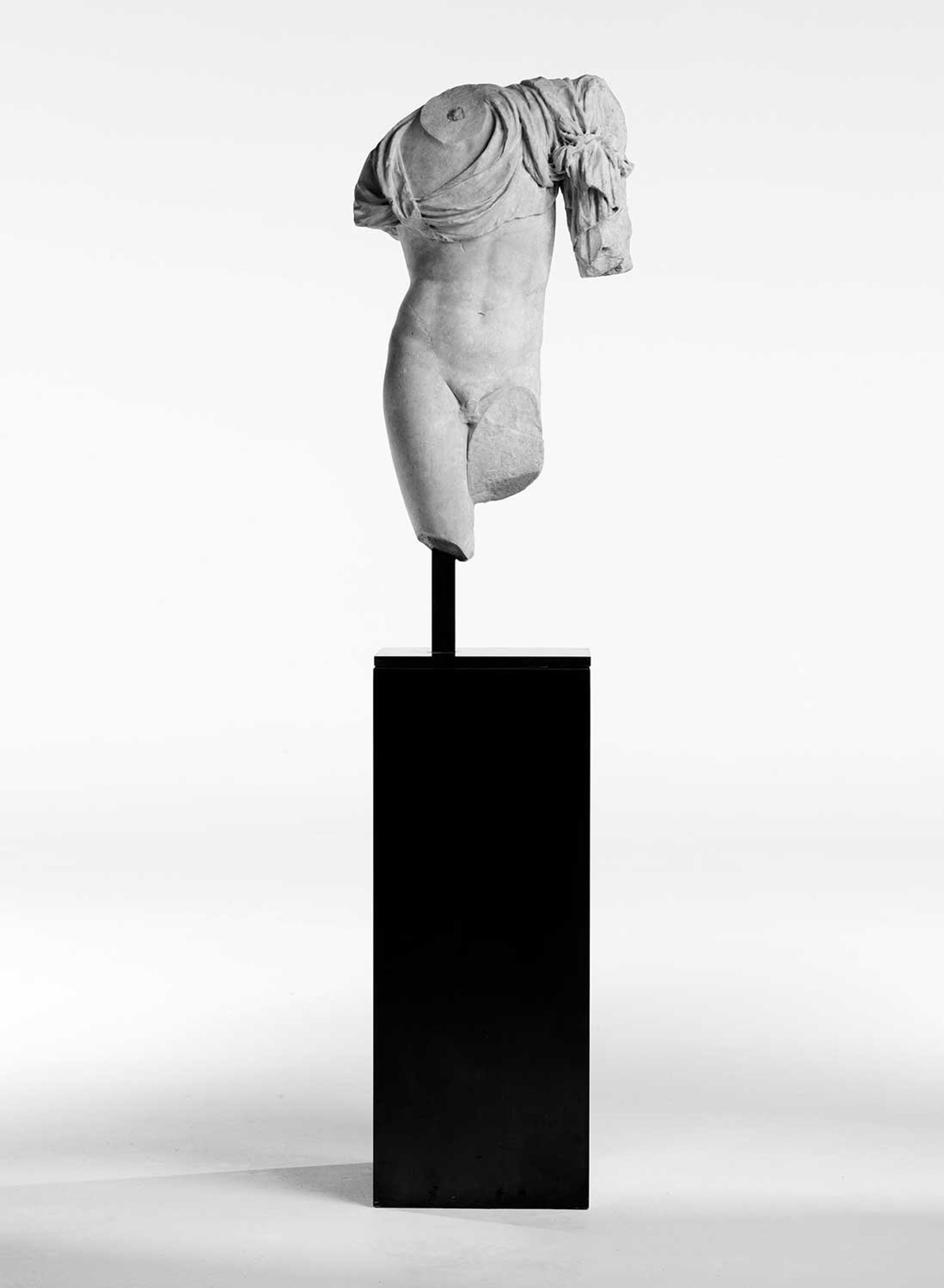
A second century AD marble torso of Apollo at Galerie Chenel
Courtesy Galerie Chenel/Frederic Mercier
Jagtiani notes how the fair is often likened to “a museum where you can buy things”, and this year’s offerings uphold that standard. Whether this will convert into sales is another matter. “We will just have to wait and see,” the director says.
- Tefaf New York, Park Avenue Armory, 9-13 May


